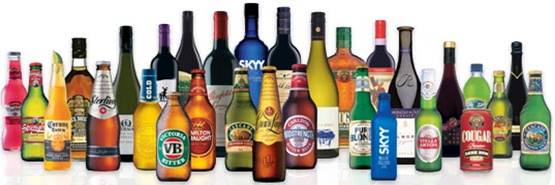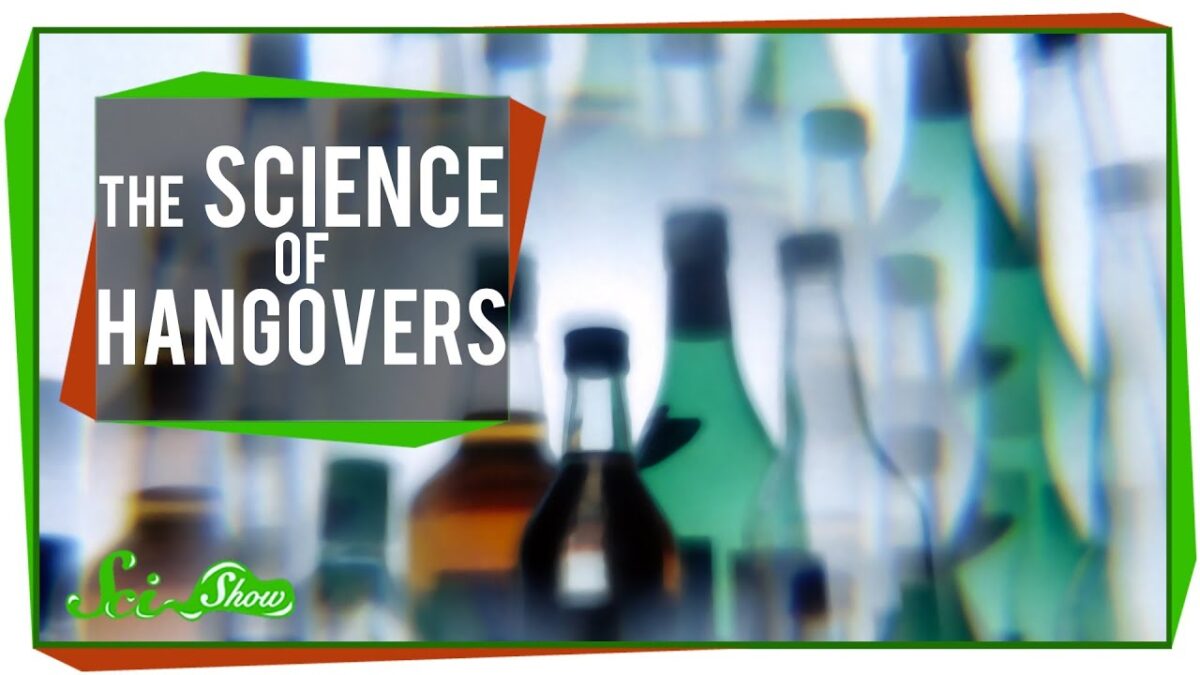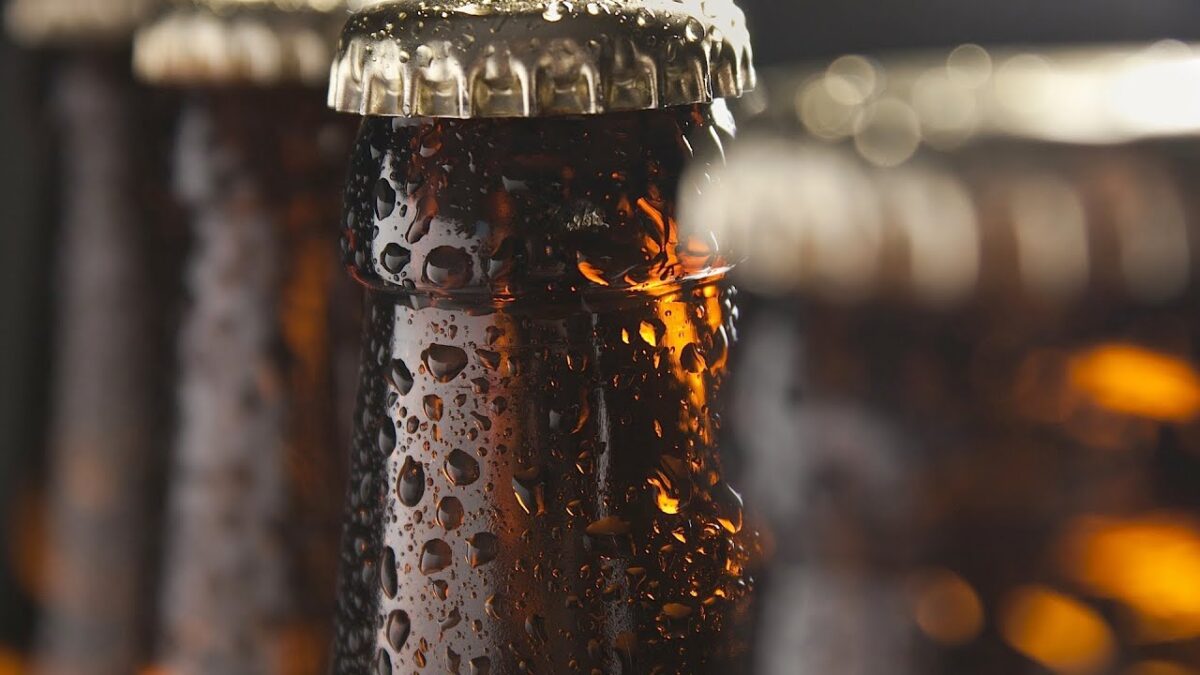The question that seems to be on many non- or semi-wine geeks’ minds is a fairly simple one:
“What is a wine that is both good AND cheap that I can find at a store near me and have for dinner tonight?”
A very good question, and one that can often be overlooked in the geek-style chasing after obscure wines with many hyphens or umlauts in their names that cost an arm and a leg that many of us hardcore types are often guilty of.
We are lucky enough to taste lots of rare and obscure goodies from all across the globe, but when we sit down on a Tuesday night with some bison burgers we’re not opening ’61 Petrus, believe you me, and there’s nothing quite so satisfying as finding a good cheapie that tickles your taste buds. This seems to satisfy me more than Lisa, but that’s what makes a horse race, eh?
One problem in making these recommendations (and something we’ve gotten endless complaints about) is that many of the cheapies we drink are somewhat obscure, limited-production wines made by two guys and a donkey that can only be found in one or two tatty little shops in Manhattan. On this page, the emphasis is on larger-production wines that are widely available, at least in the United States. Our friends overseas will have to fend for themselves, I’m afraid, as we have little grasp of the retail scene outside our fruited plains.
One ironclad rule: any wine with a TV commercial is a wine to be avoided at all costs.
Okay, then, cut to the chase–here are some daily drinkers; forty or so wines, all good, most readily available and all $15 and under:
T H E R E D S
Our favorite burger wine right now is Three Thieves Zinfandel California ($10). In comes in a cute retro-styled liter jug, but beyond the gimmicky container is a good mouthful of zin at a good price. Spicy and berry-fruity, it works great with barbeque or smoked meats and gives some nice zin character for the money. Unfortunately, it seems to have been a limited release. Still, if you see it, pick some up.
Another zin, the Cline Zinfandel California is a lighter-styled version of zin that’s a little crisper and less round but delivers a lot of flavor for $10 or so. It even comes with a literary effort, an ode to zin on the back of the bottle (“I AM ZINFANDEL…”).
Marietta Cellars makes a non-vintage field blend wine called Old Vine Red Lot 33 (or 34, or 35, etc.), which is a blend of zin, petite sirah, gamay and a few others, but comes across mostly like a zin. Full-bodied and richly fruity, but with some nice acidity and a decent tannic core to hang the fruit on, it’s a good mouthful for about $10-11. Another barbeque beauty.
Vinum Cellars Petite Sirah Clarksburg ($13) is a purply-black beauty, dark and robust and a great match with grilled steak. A big wine, you sure get your money’s worth here.
Mas de Gourgonnier Les Baux de Provence ($10) is another cheapie perennial at our house, a wine with some good dirt, happy leathery character over a base of tart red fruit. Comes in a cute round-bottomed bottle, which is a little gimmicky, but the wine inside is reliably complex and tasty.
Quinto do Crasto Douro Vinho Tinto ($12), is a Portuguese wine made from the grapes used to make Port, dark and muscular. An interesting, different wine with a lot of nice rough, rustic character. The depth and richness of this one surprises people, who expect it to have a higher price tag. Try it with big meat.
Castaño ‘Hécula’ Yecla ($10) is a meaty, roasty-flavored wine from a rather obscure (to me, anyway) region of Spain. Plush and dark, it’s amiable and rich and ripe, with low acidity and borderline gobbiness. There’s an ‘Americans only’ sister bottling called ‘Solanera’ that takes the gobby low-acid thing into a ditch, but the Hécula has just enough backbone to get by. Think of it as a chewier Côte du Rhône.
Casa Lapostolle Cabernet Sauvignon Rapel Valley (Chile) ($9) is a very smooth, quaffably round cabernet from Chile, widely available, easy-drinking and soft, with simple, velvety cassis-cabernet character (say THAT three times fast…). A non-threatening sipping red (as opposed to a food red) for nongeeks and those who love them.
Altos Los Hormigas Malbec Mendoza ($9): A meaty, crisp wine from Argentina made from the malbec grape, with pleasant tartness, a nice acidic backbone and some dark coffee-crunchy fruit. Nice stuff for $9 or so, plenty of guts–good bang for the buck.
Domaine Clavel Coteaux du Languedoc ‘Le Mas’ ($8) is the low-end bottling from a reliable Languedoc house. I’ve had a few vintages of this and it’s always good house wine, soft and meaty and happily complex, a loosely-knit, easygoing little wine.
Vinicola del Priorat ‘Ònix’ Priorat ($10) is a big, dark wine, stuffed full of blackberry-earthy flavor, robust and plummily broad-beamed. Very nice with grilled steak, BBQ or other strongly seasoned meat dishes, as it has the guts to fight back over flavors that might crush a weaker wine. Manly stuff.
Argyle Pinot Noir Willamette Valley ($15) is the only pinot noir on this list, mainly because good cheap pinot noir is as rare as a trumpeter swan on a tricycle. Nevertheless, these guys have sneaked one in just under the wire, a middleweight, cherry-cola-laced wine with a pleasant brightness and good composure, perfect with simple hearty fare, roast chicken, stuff like that. Plus, it’s got a screwcap, which means it’s cool.
Domaine Rabasse Charavin Côte du Rhône is a rich, ripe, earthy Côte du Rhône for around $10, dark, full of robust flavor and easy to match with many different foods. One of our house pours.
Finally a couple of Italians: La Carraia Sangiovese Umbria ($10) has more upfront fruit and less acidity than your textbook Italian sangiovese. Detractors might sneer at it as ‘Californian’ (detractors just love to sneer) but I believe there is a place in the world for an Italian wine that has friendly, forward fruit and couldn’t possibly be used to strip paint off drywall. Very nice, in a New World fruit-forward style.
Falesco ‘Vitiano’ Umbria ($10) is a blend of one-third each of sangiovese, cabernet and merlot, and is another favorite whenever we have to put a big Italian meal together. The wine is nicely balanced and has the acidic spine to go very well with tomato dishes. Not as lush as the La Carraia Sangiovese, it’s a bit more restrained, but it’s got a lot of character for a ten-buck wine. Another nongeek favorite, this stole the show at the wedding of Lisa’s brother, Jean d’Alsace.__
T H E W H I T E S
For those willing to brave German riesling (we love it, but understand your nervousness), Dr. Burklin-Wolf Riesling Forster Kabinett is a good introduction, a snappy wine with a hint of sweetness offset by zippy acidity. Snappy and zippy at once for only $12? How can you say no?
Hardcore geeks (you know who you are) will roll their eyes, but I happen to like Lindeman’s Riesling South Eastern Australia ‘Bin 75’ ($6) as a decent, baseline version of the grape. Yes, it’s produced in industrial quantities, but it’s light and refreshing and has a sense of rieslingness. Americans don’t drink enough riesling, so go buy this, okay? It’s everywhere, and it’s cheap.
A wine for all you chardonnay fans: Fairview/Charles Back Wine of Western Cape (South Africa) ‘Goats do Roam’ ($7). No, it’s not chardonnay (it’s a blend of white-Rhône varieties), but it’s got the creaminess and round mouthfeel that friends of that maligned grape crave. It’s kind of an odd wine, but it has a good deal of character, and I find it grows on me. In a good way, I mean, not like a fungus.
Another wine in a similar vein is Bonny Doon Vineyard Ca’ del Solo ‘Big House White’ California. Peach-pineapple-floral smelling, crisp and charmingly straightforward, it’s a happily floral white wine with some friendly creaminess and a bit of heft, a nice presence. Another screwcapped (cool) wine.
The rare actual chardonnay that I’ll recommend, Babich Chardonnay Unwooded Hawke’s Bay (New Zealand) ($10) is a good bet, lots of apple-pear flavors, a lack of buttery-vanilla woodiness. A friendly, juicy little wine that actually tastes like grapes, not barrels. Babich is a good value winery that makes straightforward versions of chardonnay, sauvignon and gewürztraminer–I think they’re all good values.
One more is the Los Vascos Chardonnay Colchagua (Chile) ($8), a bright, fresh and fruity-smelling wine, simple and quaffable, but it has a very appealing juicy-fruity nose and there’s no overt oak to speak of to interfere with the bright fruitiness.
If you’ve got food that calls for something a little zingier, try another steal from the southern hemisphere, Cairnbrae ‘The Stones’ Sauvignon Blanc Marlborough (New Zealand) ($11). Crisper than chardonnay, with more of a citrusy/herbaceous zip to it, this is a good example of the things they’re doing with the grape in kiwiland. Perfect with seafood.
There are a lot of good, crisp, food-friendly whites coming out of Spain these days, two of which are Viña Sila ‘Las Brisas’ Rueda($6) and Dominio de Eguren Vino de la Tierra de Castilla ‘Protocolo’ ($6). The Las Brisas is a bit more sauvignon-like, grassy and citric, the Protocolo is minerally and taut–both are fine matches for fish or shellfish.
Another pickup from France, this time Burgundy, Jean-Marc Brocard ‘Chardonnay sur Kimmeridgen’ Bourgogne is a very decent ‘generic’ white Burgundy, made in a steelier style than a California chardonnay but still keeping the full flavors of the grape. A steal at about ten bucks.
Vinum Cellars Chenin Blanc Clarksburg ($10) has a slightly-too-cute label (two hitchhikers with a sign reading ‘Will Work for Chenin’), but the wine isn’t gimmicky, a bright glassful of California-style chenin that is cheerful and unmarred by excess woodiness or winemakers’ tricks.
Trimbach Gewürztraminer Alsace ($14) is an inexpensive way to sample this curiously spicy apple & lychee-scented grape. Give it a try if you’re in the mood for something new and interesting; its extremely vivid character makes it a tough one to match with some foods, but try it with spicy Asian foods. This is what we bring whenever we trot over to our local Indian BYO place, and the spicy, slightly oily character of the wine works beautifully with shrimp vindaloo or tandoori chicken–it’s one of those wine/food pairings that just tickle me.
Another real deal in white wine from Alsace (Alsatian whites come in tall, thin green bottles), Domaine Paul Blanck Pinot Blanc Alsace($10) is a boisterous pinot blanc, maybe a bit much to match with food, but great as a sipper before dinner, a relatively small-framed wine that is nonetheless bursting with flowery-fruity effusiveness.__
F I Z Z I E S
We don’t drink a lot of the fizzy stuff (why spoil good wine with bubbles?), so cheapies are fine for most of our needs. Domaine des Baumard makes two nonvintage color-coded sparklers under the appellation Cremant de Loire, the turquois (blue) and the corail(pink). The turquois is chenin blanc, the corail has some cabernet franc in it (hence the pinkness). Both are great values, just squeaking in at $15.
Domaine Deletaing Montlouis NV is our house fizz, bubbly and festive and a hard-to-beat steal at $12. Firm and complex, lots of taut minerally flavors. Who needs to pay Champagne prices for name recognition when wines like this are around?
Lastly, try a Prosecco from Italy, like a Contine Riouolo Prosecco Veneto ($9). Just off-dry, unsubtle and friendly, a broad little fizz that does well as an informal apertif.__
S W E E T I E S
It’s tough to find good dessert wines for under $15, but Quinto do Infantado Ruby Port ($12), is a luscious, earthy port that compares favorably to wines at twice the price. One of those rare wines that, the minute I tasted it, I knew I had to have a bunch around. Medium-sweet, beautifully balanced and full of rich, brick-red flavors, I can’t recommend this highly enough. Grab some if you see it for super after-dinner sipping. These people make a fine Tawny Port as well, for about the same dough.
Warre’s ‘Warrior’ Porto ($15) is another rich non-vintage blend, somewhere in character between the redness of a ruby port and the dark brambliness of a vintage character. Nice stuff for the money.
One sweetie that always gets a rise out of nongeeks is Yalumba ‘Museum Muscat’ NV ($15), an example of Australian “liquor muscats”–brown-sugary and butterscotchy, quite sweet and rich, a little of it goes a long way but it’s good stuff and the kids love it.
Another one that just squeaks in under the eligibility limit is Niepoort Vintage Character Port ($15), a darker and bramblier wine than the Infantado, ostensibly made in the style of vintage port, but really a nice after-dinner sipper on its own merits, with a good balance of sweetness and crisp acidity and toasty-dark berryish fruit. A winner, from a house that can do little wrong these past few years.

 We provide the ultimate professional mobile bar service in Austin. We take care of all the details of your events making party planning easier. Looking for a professional bartender to serve you and your guests at your next event or party? All of our Austin bartenders are Texas Alcohol Beverage Control (TABC) certified – meaning they have been tested and certified by the State of Texas. Mobile Bartending is focused on providing high-quality service and customer satisfaction - we will do everything we can to meet your expectations. All of our Austin TX bartenders are covered by our $3 million Liquor Liability Insurance – very important as Texas has a “Host Liability” law on the books!
We provide the ultimate professional mobile bar service in Austin. We take care of all the details of your events making party planning easier. Looking for a professional bartender to serve you and your guests at your next event or party? All of our Austin bartenders are Texas Alcohol Beverage Control (TABC) certified – meaning they have been tested and certified by the State of Texas. Mobile Bartending is focused on providing high-quality service and customer satisfaction - we will do everything we can to meet your expectations. All of our Austin TX bartenders are covered by our $3 million Liquor Liability Insurance – very important as Texas has a “Host Liability” law on the books!









 DID YOU REALIZE THAT AN ESTIMATED 90% of systemic diseases can have an oral manifestation? Your mouth is loaded with helpful information about your body’s overall health.
DID YOU REALIZE THAT AN ESTIMATED 90% of systemic diseases can have an oral manifestation? Your mouth is loaded with helpful information about your body’s overall health.